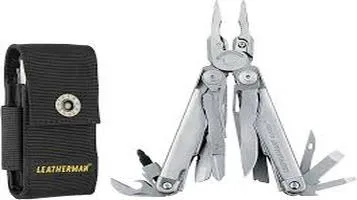Tommy Hilfiger: A Fusion of Classic and Contemporary
Tommy Hilfiger is a renowned American fashion designer and the founder of the Tommy Hilfiger Corporation, established in 1985. Known for its classic American style with a modern twist, the brand offers a wide range of apparel, footwear, and accessories for men, women, and children. Hilfiger's designs often feature a preppy aesthetic, characterized by bold colors, clean lines, and the iconic red, white, and blue logo. Over the years, the brand has expanded globally, becoming a symbol of accessible luxury and timeless fashion. Tommy Hilfiger is also recognized for its collaborations with celebrities and artists, as well as its commitment to sustainability and inclusivity. The brand continues to influence the fashion industry with its innovative and youthful spirit.

Tommy Hilfiger, the iconic American fashion brand, has been a staple in the apparel industry since its inception in 1985. Founded by the designer of the same name, Tommy Hilfiger has grown from a small menswear line into a global fashion powerhouse, synonymous with preppy, all-American style. Over the years, the brand has managed to adapt to changing fashion trends while maintaining its signature aesthetic, making it a favorite among diverse demographics. This review delves into various aspects of the brand, including its design philosophy, quality, market position, and overall impact on the fashion industry.
Design Philosophy and Aesthetic
Tommy Hilfiger’s design philosophy revolves around a blend of classic American cool with a modern twist. The brand's aesthetic is heavily influenced by preppy styles, characterized by clean lines, vibrant colors, and a polished yet relaxed look. Signature pieces like the classic polo shirt, crisp button-downs, and tailored blazers are staples in the Hilfiger collection. The iconic red, white, and blue logo has become a symbol of the brand's commitment to quality and style.
One of the strengths of Tommy Hilfiger is its ability to create timeless pieces that remain relevant regardless of fleeting fashion trends. However, the brand doesn’t shy away from innovation. Collaborations with high-profile celebrities and designers, such as Gigi Hadid and Zendaya, have introduced fresh, contemporary elements to the brand’s offerings. These collaborations have not only injected new life into the collections but have also attracted a younger, more diverse audience.
Quality and Craftsmanship
When it comes to quality, Tommy Hilfiger strikes a balance between premium craftsmanship and accessibility. The materials used in their clothing, from cotton and wool to denim and leather, are generally of high quality, ensuring durability and comfort. The brand pays meticulous attention to detail, which is evident in the stitching, fit, and finish of their garments. This commitment to quality has helped Tommy Hilfiger maintain a loyal customer base that values both style and longevity in their clothing.
However, it is important to note that the brand offers a wide range of products at different price points. While the premium lines, such as the Tommy Hilfiger Tailored collection, boast superior craftsmanship and materials, the more affordable lines may not always meet the same high standards. This disparity can sometimes lead to mixed reviews from customers, particularly those who expect the same level of quality across all product lines.
Market Position and Global Presence
Tommy Hilfiger’s market position is a testament to its widespread appeal and strategic business acumen. The brand has successfully established a strong presence in both the luxury and mass-market segments. Its ability to cater to a broad audience, from affluent customers seeking high-end fashion to everyday consumers looking for stylish yet affordable options, has been a key factor in its success.
The brand’s global presence is impressive, with a retail network spanning over 100 countries and a robust online presence. Flagship stores in fashion capitals like New York, Paris, and Tokyo showcase the brand's latest collections and serve as a testament to its international appeal. Additionally, Tommy Hilfiger's e-commerce platform is user-friendly and offers a seamless shopping experience, further cementing its position in the digital age.
Sustainability and Corporate Responsibility
In recent years, Tommy Hilfiger has made significant strides in sustainability and corporate responsibility. The brand has launched several initiatives aimed at reducing its environmental impact, such as the "Make it Possible" program, which outlines ambitious goals for sustainable practices by 2030. These initiatives include using more sustainable materials, reducing water and energy consumption, and improving labor conditions in the supply chain.
While these efforts are commendable, the brand still faces challenges in fully achieving its sustainability goals. The fashion industry as a whole is grappling with issues related to fast fashion, waste, and ethical production, and Tommy Hilfiger is no exception. However, the brand's transparency and commitment to continuous improvement are positive signs that it is moving in the right direction.
Conclusion
Tommy Hilfiger stands as a quintessential example of a brand that has successfully navigated the ever-changing landscape of the fashion industry. Its ability to blend classic American style with contemporary influences has allowed it to remain relevant and appealing to a diverse audience. The brand’s commitment to quality, strategic market positioning, and efforts towards sustainability further enhance its reputation.
However, like any brand, Tommy Hilfiger is not without its challenges. The disparity in quality across different product lines and the ongoing pursuit of sustainability goals are areas that require continuous attention and improvement. Nevertheless, Tommy Hilfiger’s enduring legacy and forward-thinking approach make it a standout name in the world of fashion, one that continues to shape trends and inspire consumers around the globe.





